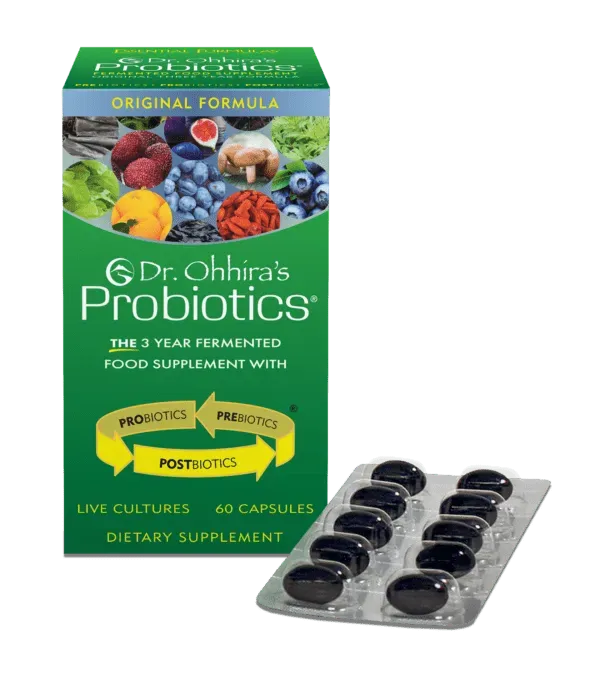How Postbiotic Metabolites Shape Gut Health
Until recently, most dietary advice from health and nutrition experts has been focused on meeting daily macronutrients (proteins, fats & carbohydrates) and micronutrients (vitamins, minerals, amino acids & essential fatty acids) needs.

The human gut microbiome is estimated to contain from 500 to 1,000 species of bacteria and a total population of approximately 100 trillion bacteria.
In addition to meeting our own nutritional needs, we must realize that every time we eat, we are feeding 100 trillion bacteria in our gastrointestinal tract. If you don’t feed your probiotic bacteria well, they will not thrive and survive. The primary nutrients or foods that probiotic bacteria require are dietary fibers and polyphenols. Humans do not possess the enzymes to digest dietary fibers. Polyphenols are a large group of compounds (over 8,000 have been identified) that occur in plants. Most polyphenols are also giant molecules that humans cannot digest very well. Hence, dietary fibers and most polyphenols pass through the digestive tract unchanged. However, when they reach the colon, they are the food for your probiotic bacteria.
Probiotic bacteria’s primary ‘job’ is metabolizing dietary fibers and polyphenols. Probiotic bacteria break these large compounds, which results in the production of more minor compounds that are referred to as postbiotic metabolites. Postbiotic metabolites have a great deal of biological activity. In addition to regulating the microbiome ecosystem’s health, many also get absorbed and influence other organ systems throughout the body. Hence, we have a gut-brain axis, a gut-heart axis, a gut-skin axis, a gut-liver axis, etc.
A healthy microbiome consists of approximately 85-90% good (probiotic) bacteria and only small numbers of harmful bacteria. Everyone has some bacteria that can potentially cause harm. However, problems generally do not occur when good bacteria vastly outnumber harmful bacteria. However, when people develop a bacterial imbalance called dysbiosis, they frequently develop symptoms such as gas, bloating, diarrhea, constipation, pain, and inflammation. These symptoms are primarily the result of not having enough postbiotic metabolites produced.
Diet is the #1 factor that influences the microbiome. Plant-based foods are the best source of dietary fibers and polyphenols to support a healthy microbiome. Fruits and vegetables are the best sources, followed by whole grains, nuts, seeds, herbs, and spices. However, numerous studies reports that 90-95% of American children and adults DO NOT consume adequate amounts of plant-based foods. Thus, most people probably do not have an optimally healthy microbiome. This means most people probably have digestive problems, which can cause or contribute to many other health problems.

Dr. Ohhira’s Probiotics are a critical recommendation I make for maintaining a healthy microbiome. The gut microbiome is a critically important regulator for many aspects of health, and I think people should take proactive steps to support a healthy microbiome. Remember, most gut problems are due to a lack of postbiotic metabolites. Dr. Ohhira’s Probiotics is the BEST product to support a healthy microbiome because each dose contains over 500 postbiotic metabolites. This is the fastest and most efficient way to relieve symptoms and elicit beneficial changes in the gut microbiome.
Dr. Ohhira’s Probiotics are produced in a multi-year fermentation process. A wide range of Japanese fruits, vegetables, mushrooms, and seaweeds are added to 80-gallon fermentation vats and 12 starter strains of probiotic bacteria. Bacteria break down the dietary fibers and polyphenols in the foods, producing the wide range of postbiotic metabolites that Dr. Ohhira’s Probiotics contain. The fermentation process that Dr. Ohhira developed mimics the natural fermentation processes in the colon, producing postbiotic metabolites. Many people get fast relief from intestinal symptoms when they take Dr. Ohhira’s Probiotics. This is what we call the Dr. Ohhira’s Difference.









